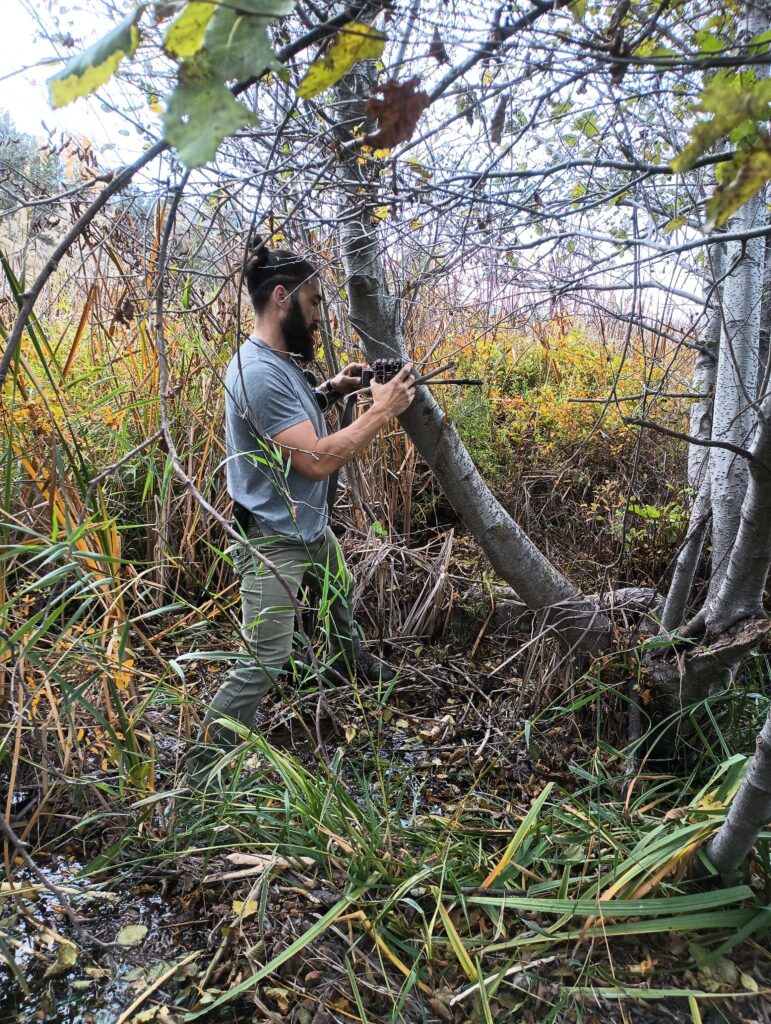Get involved with cAMera trapping
Camera Trapping - An Insight into the Secret Lives of Beavers
Pictured Above: A Beaver Enjoying a Snack
Trapping beavers!? It’s not what it sounds like.
Beavers live very private and secretive lives. They are nocturnal, typically leaving their dens only at night to forage, socialize, and build dams. Most Oregon residents have never observed beaver living in their natural habitat! Camera trapping is a passive video collection technology commonly used by hunters, trackers, and wildlife experts alike to gather footage. It is a non-obtrusive method to observe not only beavers, but any local wildlife that happens to pass in front of the camera’s motion sensor.
How Does It Work?
Camera traps are discreet battery powered, motion-activated cameras that are often secured to trees and other natural structures. When they are triggered by adequate motion within their monitoring field, the camera turns on and starts recording (typically in 30 second bursts). Camera traps are weatherproof and can record day or night footage. The cameras are typically left in place for days or weeks at a time. They need to be periodically visited so that footage can be downloaded, and batteries can be recharged.
Who Can Camera Trap?
Anyone with the dedication to pick and comfortably access promising camera trapping locations (Beaver Works can help with this), and routinely download/organize footage/charge camera batteries can get involved. This is an excellent volunteer opportunity for those who are eager to contribute to Beaver Works but prefer to operate in a more solitary environment. We just ask that you commit to checking the ‘traps’ at minimum once per month, and more frequently as you are learning to place the trap properly.
Setting a camera trap takes skill. A waving branch or even large blade of grass in the camera’s field of vision can trigger the motion-sensor repeatedly – and drain the camera batteries before any wildlife come along.

Pictured Below: A Beaver Facing Down a Perplexed Coyote
Pictured Below: A Romp of River Otters Swimming by a Beaver Dam
What We Can Learn
Beavers (and other wildlife) typically don’t behave naturally when humans are present. Camera trapping provides an unadulterated glimpse into the lives of beavers and other species we would otherwise not have the opportunity to observe. We get a chance to see a ‘day in the life’. Camera trapping efforts have produced valuable footage of beavers socializing, provide insight into family interactions, grooming behaviors, mature individuals teaching/sharing food with young, and more. Not only do we get a look into these beaver behaviors, but we are able to watch their interactions with other species, as well as gaining a greater perspective on the other species that are active in that particular area.
Beavers are a keystone species because of the habitat their dams create. The slow moving, pooled water attracts many other species, as evidenced by camera trapping footage. We have observed deer, cougars, owls, otters, coyotes, badgers, smaller rodents, mink, salmonids, and more making use of beaver habitat. The footage has revealed predator-prey interactions as well as coexistence footage – such as badgers and coyotes peacefully sharing a watering hole and acknowledging one another as companions.
Why We Need Your Help
Camera trapping is passive, but reviewing the footage can be labor intensive. We are searching for volunteers who are willing to take the time and care to sort through the footage they collect so they are able to share the most valuable shots. We will provide training on how to place the cameras, check/maintain them, and download as well as comb through footage. If you are interested in getting involved, please fill out a form on the Contact Us page.

